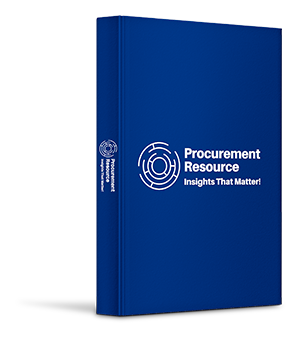Reports

Global Clinical Wearables Market: Country Overview; Recent Events; Value Chain Analysis; Production Process; Price Analysis; Indicator Analysis; Market Dynamics: Drivers & Constraints, Innovations & Trends, SWOT Analysis, Porter’s Five Forces; Industry Best Practices: Sourcing Strategy, Procurement Model, Key Factors Influencing the Quotation; Key Supplier Analysis, 2024-2032
Clinical Wearables Industry Report by Regional Category Spend, Price Analysis, Key Demand, and Price Indicators, and Best Buying Practices
The global Clinical Wearables market reached a value of about USD 22.6 billion in 2021. The industry is projected to grow at a CAGR of around 23% in the forecast period of 2022-2027 to reach a value of about USD 78.3 billion by 2027.
The global Clinical Wearables industry report gives a comprehensive analysis of the industry, including key segments, trends, drivers, restraints, the competitive landscape, and other essential market aspects. The growing prevalence of chronic and lifestyle disorders is primarily driving the market growth. North America is the highest category spender by region, driving the demand for the Clinical Wearables industry.
Industry Definition and Segmentation
Clinical Wearables are tiny electronic devices that can be worn, such as Fitbits and smartwatches, to monitor and collect data like temperature, blood pressure, blood oxygen, breathing rate, etc. These gadgets can even transmit real-time health data to a doctor or other healthcare expert. The Clinical Wearables industry report comprises segments based on product (Earwear/Hearables, Watch, and Wristband) and region (North America, Europe, Asia Pacific, the Middle East and Africa, and South America).
The North American Region is Driving the Growth of the Industry
North America holds the largest share in the industry due to the rising incidence of cardiovascular disease, diabetes, and cancer in this area. The availability of advanced healthcare infrastructure and an increase in chronic disorders requiring periodic monitoring further the market demand. Also, the rising smartphone penetration and the number of smartphone-based healthcare devices, and rising investments, funds, and grants are providing a significant thrust to the industry.
The market is being driven by the growing need to track various body metrics to check health conditions. They are essential for multiple medical applications, including gastrointestinal, cardiovascular, and metabolic monitoring, sleep, and movement problems, propelling the industry's expansion. These devices assist initiatives linked to lung health and diabetes control and have the potential to alter pre- and neo-natal and maternity care, boosting the market's development. Other factors such as the prevalence and incidence of lifestyle-related diseases, including diabetes and hypertension, the growing death rate due to non-communicable illnesses, the ever-increasing elderly population, the increased frequency of chronic diseases, and the availability of modern medical equipment are driving the industry's growth.
These devices assist in providing the healthcare system with new and appealing ways to improve patient care while lowering costs by assessing crucial risk factors like blood pressure and glucose; remote patient monitoring may enhance the management of chronic illnesses. RPM provides various benefits for hospitals and end-users, including shorter hospital stays, lower healthcare costs, and fewer doctor appointments. As a result, the market is likely to expand.
Best Procurement Practices
The global Clinical Wearables industry report by Procurement Resource gives an in-depth analysis of the best buying practices followed by major global Clinical Wearables regions, such as engagement models, contract terms, and buyer and supplier negotiation levers, among others.
Category Management Studies
Patient monitoring devices (e.g., glucose monitors) collect data about a patient's condition (e.g., blood glucose level) and send it to a medical software cloud server. A cloud server gets data from wearable devices via gateways and a firewall as part of the solution. The cloud server houses the solution's business logic and control applications and data storage, processing, and analytics models. The anonymised patient data is processed and evaluated. Together with the source data, the observed patterns are made available to clinicians and patients in their user apps, allowing them to keep track of their health, enhance therapy, and promote illness self-management.
Technological Developments, Further Augmenting the Procurement of Clinical Wearables
The industry is aided by various technical breakthroughs, such as developing the IoT (IoT)-integrated smartwatches, patches, and innovative apparel. Furthermore, the rising availability of superior wearable-centric analytic technologies. These devices enable breakthroughs such as better ICU alarms and continuous arrhythmia identification, and neo-natal temperature monitoring in rural settings, furthering the market growth. In addition, Artificial intelligence (AI) can be utilised in 5G to predict a patient's potential diagnosis and treatments. It can assist healthcare systems in identifying which patients are more likely to experience postoperative difficulties, allowing for early intervention. Healthcare businesses may leverage AI technologies to give the most satisfactory treatment possible in real-time, wherever they are, thanks to 5G networks. Also, the increasing R&D and innovation in the sector are likely to enable effective use of health data while assisting healthcare services and intervention, thus resulting in the industry's expansion.
The regional markets for the industry can be divided into North America, South America, Europe, the Middle East and Africa, and the Asia Pacific.
Key Industry Players Mentioned in the Clinical Wearables Industry Report
- IQVIA Holdings Inc.
- Parexel International Corporation
- Laboratory Corporation of America Holdings
- Syneos Health
- ActiGraph LLC
Market Landscape
The rivalry is becoming more intense as the number of market competitors grows. Players are causing havoc by releasing a slew of new items. Leading competitors in the wearable medical device market are focused on different growth tactics such as partnerships, mergers, and acquisitions, and product portfolio development to maintain their market position.
Key Initiatives by Companies
- Philips Ventilator BiPAP A40 EFL will be available in November 2020, according to the firm. This approach will aid the organisation in extending their COPD patient home healthcare offering.
- Fitbit, Inc. (US) came together with FibriCheck in March 2020 to offer Fitbit smartwatch to its customers in Europe which has a CE-marked Heart Health Detection App in it.
1. Executive Summary
2. Clinical Wearables Market Snapshot
2.1. Clinical Wearables Market Outlook
2.2. Clinical Wearables Industry Analysis by Product
2.2.1. Earwear/Hearables
2.2.2. Watch
2.2.3. Wristband
2.3. Regional Overview
2.3.1. North America
2.3.2. Europe
2.3.3. Asia Pacific
2.3.4. Latin America
2.3.5. Middle East and Africa
3. Key Trends in Application
4. Impact of Recent Events
5. Clinical Wearables Value Chain Analysis
6. Clinical Wearables Production Process
7. Trade Analysis
8. Major Risk Factors in Sourcing
9. Clinical Wearables Cost Structure
10. Clinical Wearables Cost Saving Opportunities
11. Clinical Wearables Price Analysis
12. Key Demand Indicator Analysis
13. Key Price Indicator Analysis
14. Clinical Wearables Market Dynamics
14.1. Drivers & Constraints
14.2. Industry Events
14.3. Swot Analysis
14.4. Porter’s Five Forces
14.4.1. Buyer Power
14.4.2. Supplier Power
14.4.3. Threat of New Entrants
14.4.4. Threat of Substitutes
14.4.5. Industry Rivalry
15. Industry Best Practices
15.1. Sourcing Strategy
15.2. Procurement Model
15.3. Contract Structure
15.4. Negotiation Levers
15.5. Pricing Model
15.6. Key Factors Influencing the Quotation
16. Key Supplier Analysis
16.1. IQVIA Holdings Inc.
16.2. Parexel International Corporation
16.3. Laboratory Corporation of America Holdings
16.4. Syneos Health
16.5. ActiGraph LLC
The global Clinical Wearables market size was valued at USD 22.6 billion in 2021.
In the forecast period of 2022-2027, the market is projected to grow at a CAGR of 23%.
The significant demand for managing patient care in the medical industry is one of the essential drivers of the Clinical Wearables market growth.
IQVIA Holdings Inc., Parexel International Corporation, Laboratory Corporation of America Holdings, Syneos Health, and ActiGraph LLC are some of the major players in the market.
The North American region of the Clinical Wearables industry holds a significant share in the market.
The global Clinical Wearables market attained a value of USD 22.6 billion in 2021, driven by the growing need to track various body metrics to check health conditions. Aided by the various technical breakthroughs, such as the development of the internet of things (IoT)-integrated smartwatches, patches, and innovative apparel, the rising availability of superior wearable-centric analytic technologies, Artificial intelligence (AI), the increasing R&D and innovation in the sector the market is expected to witness further growth in the forecast period of 2022-2027, growing at a CAGR of 23%. The market is projected to reach USD 78.3 billion by 2027. Some of the leading players in the industry are IQVIA Holdings Inc., Parexel International Corporation, Laboratory Corporation of America Holdings, Syneos Health, and ActiGraph LLC.
Procurement Resources' detailed research approach explores deep into the industry, encompassing the macro and micro aspects of the industry. Its team of experts uses a combination of cutting-edge analytical tools and their expertise, thus, delivering its customers with market insights that are accurate and actionable and help them remain ahead of their competition.
Compare test & Choose the Right Report Version for You
RIGHT PEOPLE
At Procurement Resource our analysts are selected after they are assessed thoroughly on having required qualities so that they can work effectively and productively and are able to execute projects based on the expectations shared by our clients. Our team is hence, technically exceptional, strategic, pragmatic, well experienced and competent.
RIGHT METHODOLOGY
We understand the cruciality of high-quality assessments that are important for our clients to take timely decisions and plan strategically. We have been continuously upgrading our tools and resources over the past years to become useful partners for our clientele. Our research methods are supported by most recent technology, our trusted and verified databases that are modified as per the needs help us serve our clients effectively every time and puts them ahead of their competitors.
RIGHT PRICE
Our team provides a detailed, high quality and deeply researched evaluations in competitive prices, that are unmatchable, and demonstrates our understanding of our client’s resource composition. These reports support our clientele make important procurement and supply chains choices that further helps them to place themselves ahead of their counterparts. We also offer attractive discounts or rebates on our forth coming reports.
RIGHT SUPPORT
Our vision is to enable our clients with superior quality market assessment and actionable evaluations to assist them with taking timely and right decisions. We are always ready to deliver our clients with maximum results by delivering them with customised suggestions to meet their exact needs within the specified timeline and help them understand the market dynamics in a better way.
Email Delivery Price: $ 999.00
The global nutmeg market reached a value of about 134 thousand tonnes in 2021. The industry is further expected to grow at a CAGR of about 4.5% in the forecast period of 2022-2027 to reach a value of around 167 thousand tonnes by 2027.
Read MoreEmail Delivery Price: $ 999.00
The global Artificial Intelligence Market reached a value of about USD 192 Billion in 2021. The industry is projected to grow at a CAGR of around 23% in the forecast period of 2022-2027 to reach a value of about USD 664.86 Billion by 2027.
Read MoreEmail Delivery Price: $ 999.00
The global HEOR market reached a value of about USD 1364.3 million in 2021. The industry is further expected to grow at a CAGR of about 12.81% in the forecast period of 2022-2027 to reach a value of around USD 2779.2 million by 2027.
Read More
